的点评
The archaeological section: an extraordinary observatory on the past history of Turkmenistan, spanning millennia.
Ashgabat National Museum of History的点评
点评:As in all the museums we have seen in Turkmenistan, also in this museum the archaeological collections - which were the main reason for our visit - are only a small part of the exhibition.
We would have gladly visited - albeit quickly - the other sections of the museum; but a misunderstanding about the opening hours meant that the museum closed exactly as soon as our visit to the archaeological section ended.
We hired an English-speaking guide at the entrance to orient ourselves in the museum rooms. The price was relatively fair, so I consider it a good investment.
As I think happens everywhere in Turkmen museums, you also pay for the right to take pictures. I alone (there were two of us) purchased this extra charge, and I was able to take the photos I liked best.
The archaeological section of the museum collects finds from different excavation areas in Turkmenistan (unlike, eg, Mary's museum which is substantially based on the finds from Gonur Depe) and from different historical periods. If a specialization can be identified here, it's that concerning the marvelous finds - showing strong Hellenistic influences - from the Arsacid fortress-city of Nisa (3rd century BC - 3rd century AD), among which the incredible series of rhytons (horns of animal emptied and used as huge drink containers), beautifully sculpted and decorated.
But aside from the treasures of Nisa, many other places and eras are represented. Already the Mesolithic period (from 50,000 years BC) is represented by flint tools from Western Turkmenistan. The Neolithic period is much more widely represented, with finds developed by the early agricultural civilizations that flourished along the northern slopes of Kopet Dag: ceramics and various ornaments, semi-precious stones, metal artefacts, etc.
As for the Bronze Age civilization, it is well represented by selected but precious finds from the Merv area, dating back to over 1000 years BC.
In essence, a visit to the archaeological section of this museum is an extraordinary observation point on the past history of Turkmenistan, spanning millennia.
We would have gladly visited - albeit quickly - the other sections of the museum; but a misunderstanding about the opening hours meant that the museum closed exactly as soon as our visit to the archaeological section ended.
We hired an English-speaking guide at the entrance to orient ourselves in the museum rooms. The price was relatively fair, so I consider it a good investment.
As I think happens everywhere in Turkmen museums, you also pay for the right to take pictures. I alone (there were two of us) purchased this extra charge, and I was able to take the photos I liked best.
The archaeological section of the museum collects finds from different excavation areas in Turkmenistan (unlike, eg, Mary's museum which is substantially based on the finds from Gonur Depe) and from different historical periods. If a specialization can be identified here, it's that concerning the marvelous finds - showing strong Hellenistic influences - from the Arsacid fortress-city of Nisa (3rd century BC - 3rd century AD), among which the incredible series of rhytons (horns of animal emptied and used as huge drink containers), beautifully sculpted and decorated.
But aside from the treasures of Nisa, many other places and eras are represented. Already the Mesolithic period (from 50,000 years BC) is represented by flint tools from Western Turkmenistan. The Neolithic period is much more widely represented, with finds developed by the early agricultural civilizations that flourished along the northern slopes of Kopet Dag: ceramics and various ornaments, semi-precious stones, metal artefacts, etc.
As for the Bronze Age civilization, it is well represented by selected but precious finds from the Merv area, dating back to over 1000 years BC.
In essence, a visit to the archaeological section of this museum is an extraordinary observation point on the past history of Turkmenistan, spanning millennia.
翻译:就像我们在土库曼斯坦参观过的所有博物馆一样,在这个博物馆中,考古藏品(我们参观的主要原因)也只是展览的一小部分。
我们很乐意参观博物馆的其他部分(尽管很快);但由于对开放时间的误解,博物馆在我们参观完考古部分后就关闭了。
我们在入口处聘请了一位会说英语的导游,以了解博物馆房间的情况。价格相对合理,所以我认为这是一笔不错的投资。
我认为土库曼博物馆的任何地方都是如此,您还需要支付拍照权。我一个人(我们两个人)支付了这项额外费用,我能够拍出我最喜欢的照片。
博物馆的考古部分收集了土库曼斯坦不同发掘区的出土文物(例如,与玛丽博物馆不同,玛丽博物馆主要基于 Gonur Depe 的出土文物)和不同历史时期的出土文物。如果这里可以确定一个专业,那就是关于来自阿尔萨息斯要塞城市尼萨(公元前 3 世纪 - 公元 3 世纪)的奇妙发现 - 显示出强烈的希腊化影响,其中包括一系列令人难以置信的角形器皿(动物的角被掏空并用作巨大的饮料容器),雕刻精美,装饰精美。
但除了尼萨的宝藏外,还有许多其他地方和时代的宝藏。西土库曼斯坦的燧石工具已经代表了中石器时代(公元前 50,000 年)。新石器时代的文物更为丰富,早期农业文明在科佩特山北坡蓬勃发展,其发掘出许多文物,包括陶瓷和各种装饰品、半宝石、金属制品等。
至于青铜时代文明,梅尔夫地区的精选珍贵文物可谓是其代表,可追溯到公元前 1000 多年前。
从本质上讲,参观该博物馆的考古部分是了解土库曼斯坦数千年历史的绝佳观察点。
我们很乐意参观博物馆的其他部分(尽管很快);但由于对开放时间的误解,博物馆在我们参观完考古部分后就关闭了。
我们在入口处聘请了一位会说英语的导游,以了解博物馆房间的情况。价格相对合理,所以我认为这是一笔不错的投资。
我认为土库曼博物馆的任何地方都是如此,您还需要支付拍照权。我一个人(我们两个人)支付了这项额外费用,我能够拍出我最喜欢的照片。
博物馆的考古部分收集了土库曼斯坦不同发掘区的出土文物(例如,与玛丽博物馆不同,玛丽博物馆主要基于 Gonur Depe 的出土文物)和不同历史时期的出土文物。如果这里可以确定一个专业,那就是关于来自阿尔萨息斯要塞城市尼萨(公元前 3 世纪 - 公元 3 世纪)的奇妙发现 - 显示出强烈的希腊化影响,其中包括一系列令人难以置信的角形器皿(动物的角被掏空并用作巨大的饮料容器),雕刻精美,装饰精美。
但除了尼萨的宝藏外,还有许多其他地方和时代的宝藏。西土库曼斯坦的燧石工具已经代表了中石器时代(公元前 50,000 年)。新石器时代的文物更为丰富,早期农业文明在科佩特山北坡蓬勃发展,其发掘出许多文物,包括陶瓷和各种装饰品、半宝石、金属制品等。
至于青铜时代文明,梅尔夫地区的精选珍贵文物可谓是其代表,可追溯到公元前 1000 多年前。
从本质上讲,参观该博物馆的考古部分是了解土库曼斯坦数千年历史的绝佳观察点。
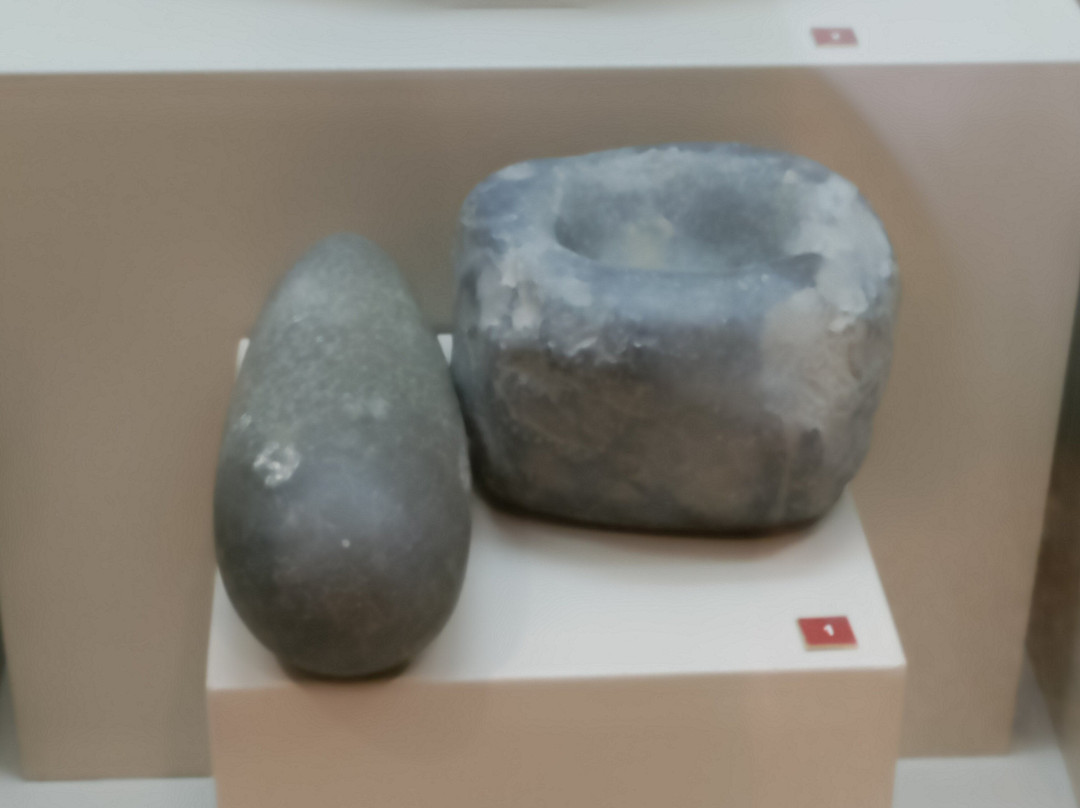
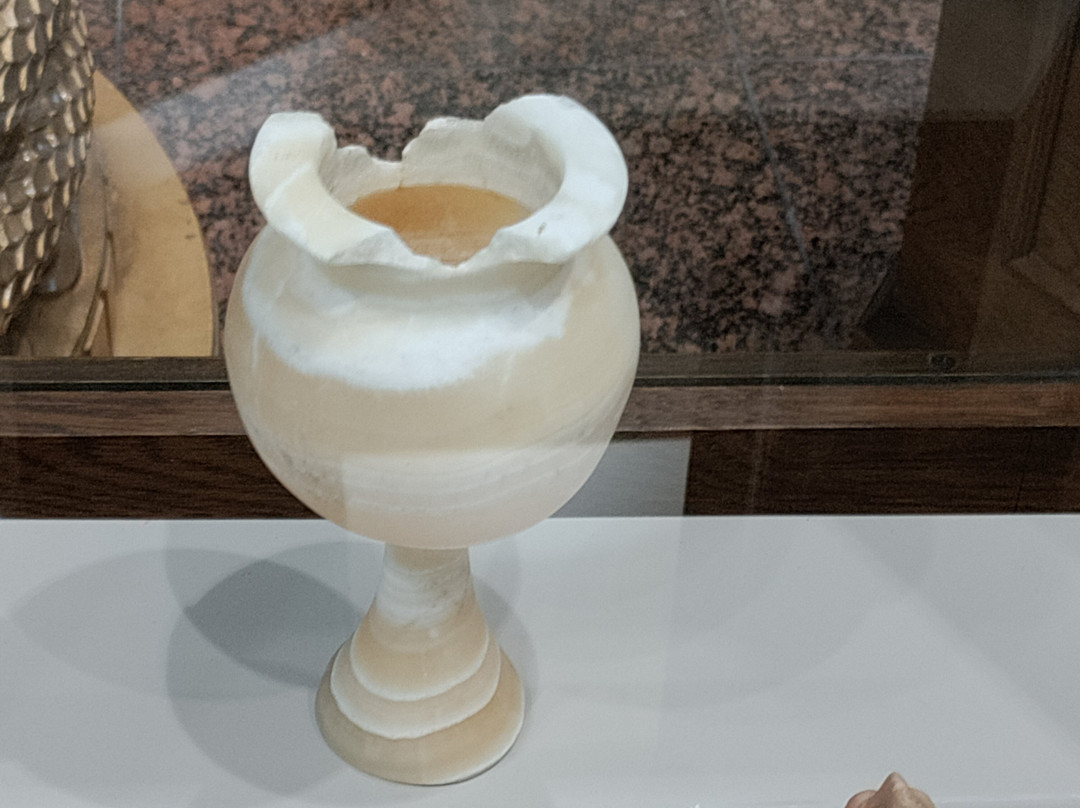
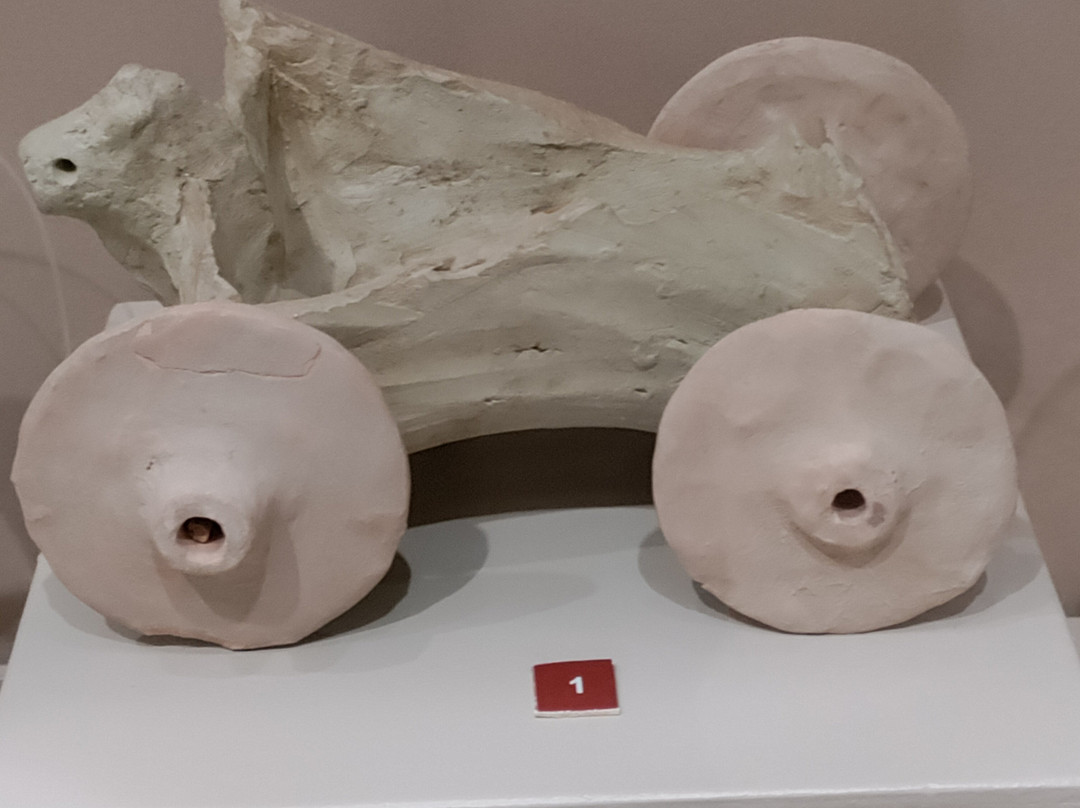
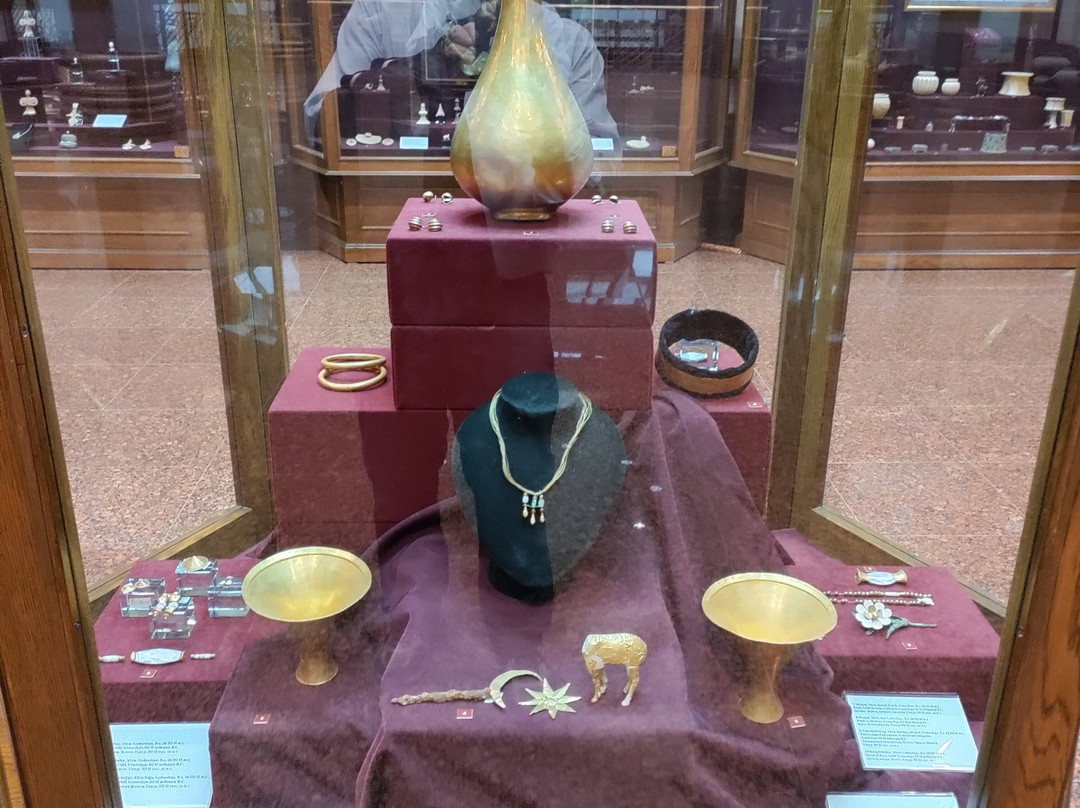

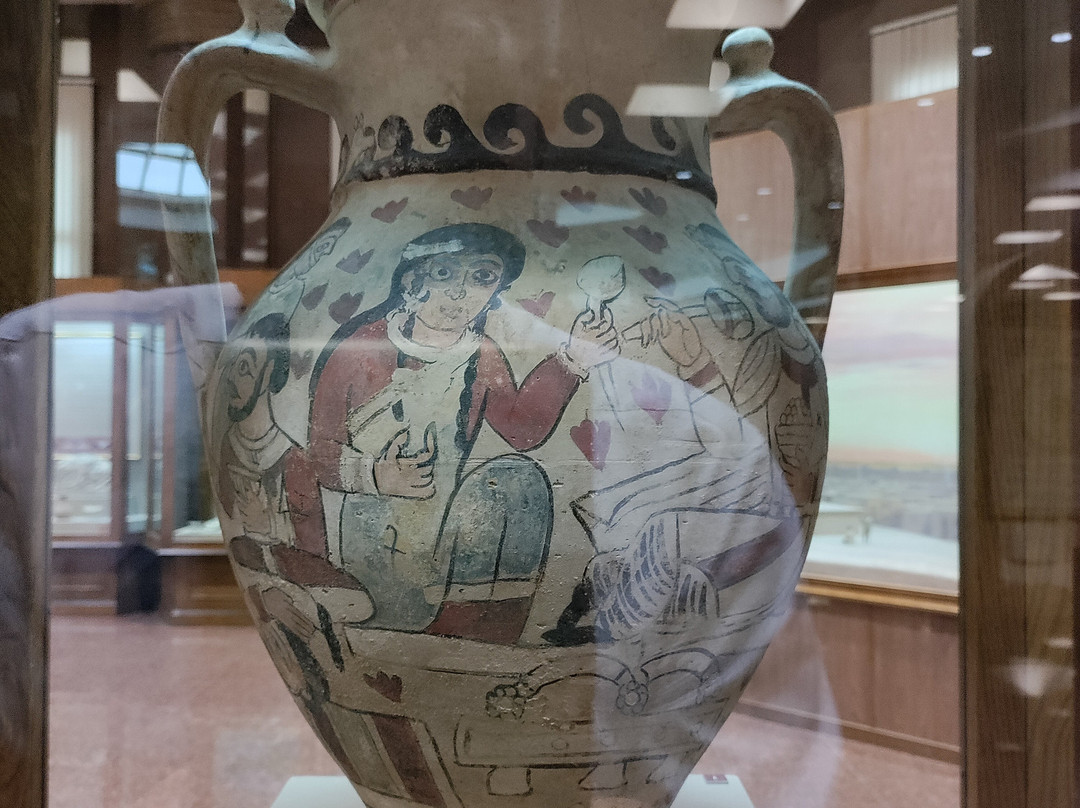
此点评仅代表旅行者个人的主观意见,并不代表TripAdvisor以及其合作方的意见。
关于我们
|
新闻动态
|
商务合作
|
会员中心
|
业主中心
|
业主通
|
常见问题
|
意见反馈
|
联系我们
|
营业执照
© 2025 Tripadvisor 版权所有。
使用条款 |隐私政策 |网站工作原理
部分照片由 VFM Leonardo 提供。
* Tripadvisor不是旅行社,也不是旅游预订服务代理商。我们提供免费、客观、公正的旅游资讯服务。 (显示更多)
TripAdvisor LLC 既不是预订代理商,也不是旅游运营商,不会向网站用户收取任何服务费。 按照规定,在 Tripadvisor 发布机票价格、游览和旅行套餐的合作伙伴(航空公司、旅行提供商及预订代理商),其标价须包含所有费用和附加费用。 例如, 机场出入境税费、消费税与其他服务费、手续费、杂费及附加费用。 当您向我们的某个合作伙伴进行预订时,请务必查阅他们的网站以了解当地行政部门要求的所有适用费用的具体情况。 除非另有说明,机票价格通常指的是一个人的价格(以人民币计)。
为方便起见,TripAdvisor LLC 根据从我们的预订合作伙伴获取的空房率计算每个酒店的均价。 对于游览和景点来说,所显示价格通常是每位成人的最低可用价格。 对于列出的任何旅行套餐或优惠,TripAdvisor LLC 无法保证任何特定的费率或价格。 此外,酒店均价每晚会更新,并以您的首选币种表示(使用现行汇率)。 由于这些已换算的价格是预估价格,因此,有关具体金额和币种请与预订网站进行核实。
此外,TripAdvisor LLC 无法保证我们网站上宣传的价格随时有效。 标价可能需要预订一定天数才能生效,或有不可用日期、使用条件或限制。
TripAdvisor公司对外部网站的内容一概不负责。优惠价格中不含税和其他费用。
ICP证:沪B2-20200433
沪ICP备20013175号
 沪公网安备31010502005427号
沪公网安备31010502005427号鹰程信息技术(上海)有限公司
货币/国家及地区
¥CNY
中国

